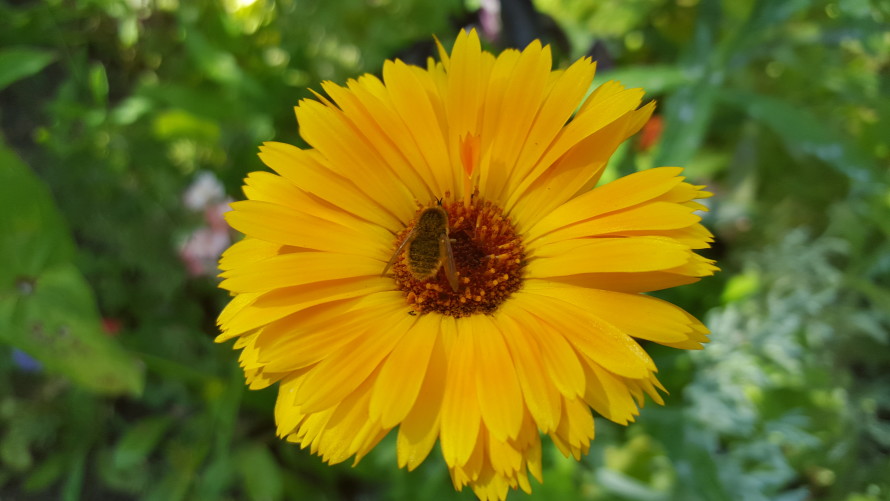Calendulas (Calendula officinalis) has been in cultivation for so long that it is not known where they originated. It is thought that they are native to southern Europe. They have now naturalized throughout Europe and the temperate areas of the world. Befitting a plant which has been in our gardens for so long, calendulas have many nicknames such as pot marigold, English marigold, Scottish marigold, garden marigold and poet’s marigold. Despite those nicknames, calendulas are not related to marigolds which are Tagetes.
Both the flowers and the leaves are edible, although it is usually the flowers that are eaten. Be sure to use Calendula officinalis and not one of the modern hybrids. The flowers are also used in dyes and skin care products such as soaps and lotions. They are so effective in moisturizing skin that you can add calendula flowers directly to your bathwater. Calendula flowers have the distinction of not losing their color when dried and used in soaps. They stay yellow instead of turning brown as most flowers do.
Calendulas are short-lived perennials that are usually grown as annuals. They prefer full sun. In hotter climates, they need some shade in the afternoons. The plants grow best in rich soil, but will also grow in poorer soils. Regardless of your soil type, they do need it to be well-drained. The plants range in size from 18 inches to 2 feet, depending on the variety. The flowers were originally yellow but have been bred in modern times to produce orange to red blooms. The original flowers were single yellow petals surrounding a darker yellow center. The newer cultivars are doubles.
Calendulas are easy to grow from seed. Sow your seeds indoors 6 to 8 weeks before your last frost or direct sow them outdoors a few weeks before your last frost. Cover the seeds. They need complete darkness to germinate. You should see sprouts in 1 to 2 weeks. In subtropical regions where the summers are too hot for calendulas, sow the seeds in your garden in the fall for winter blooms. They prefer cooler temperatures.
Deadhead the flowers (remove spent flowers) to keep the plants blooming. If the plants become leggy, prune them back to encourage branching.
To harvest the flowers, collect them on hot, sunny days when they contain the most resin. Choose flowers that are just beginning to open. They will finish opening while they are drying. Set them on screens in a dark, well-ventilated space. The flowers are completely dry when the centers are dry. Store your dried flowers in a dark, dry place. The flowers are prone to mold if they are stored in a moist area such as a basement. Darkness is important. The flowers will fade if exposed to sunlight.
Always leave a few flowers on your plants to go to seed. They will readily self-sow in your garden but they are not invasive.

